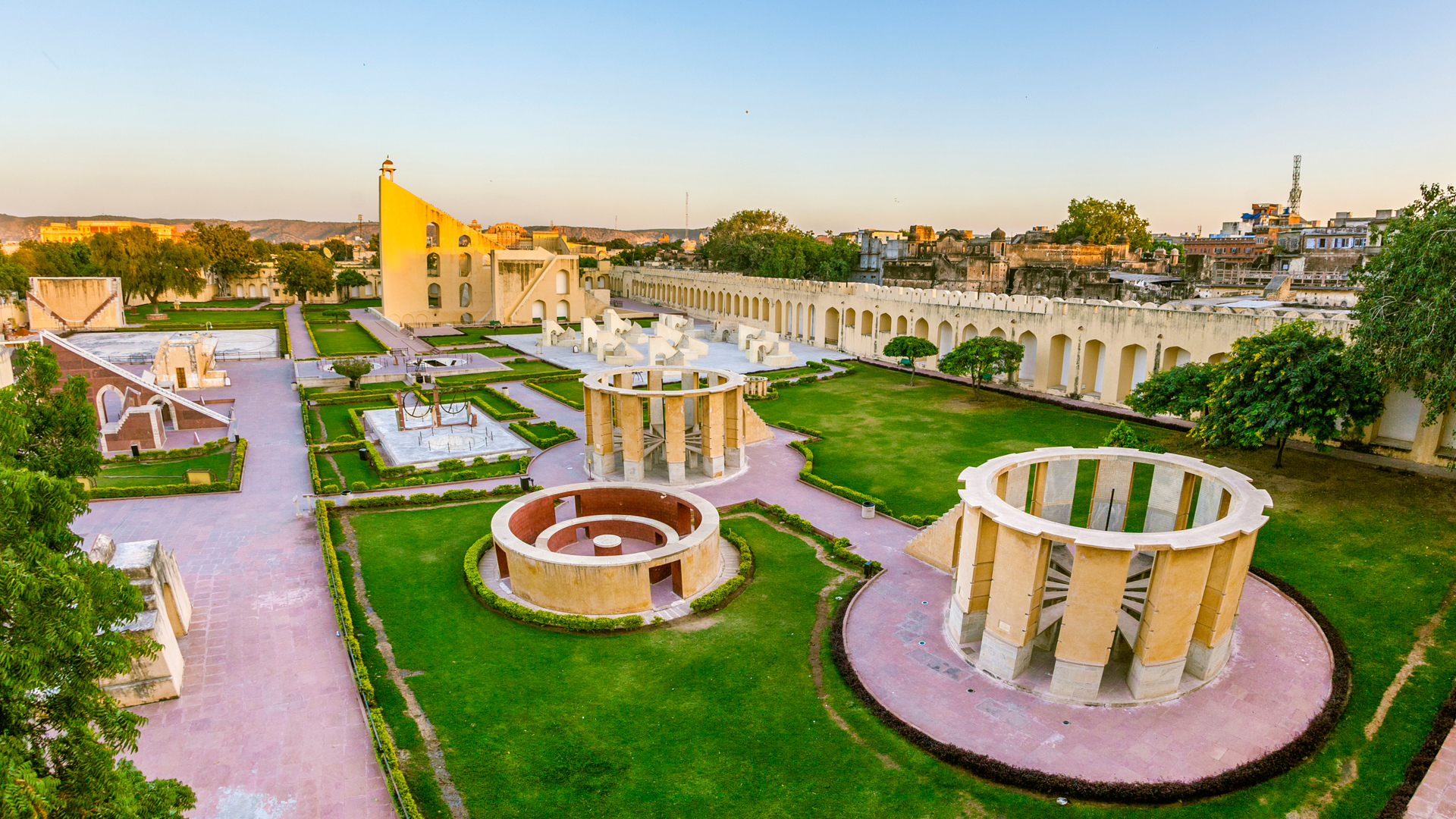Jantar Mantar in Jaipur is an astronomical observatory built in the early 18th century by Maharaja Sawai Jai Singh II. It is one of the five such observatories built by the Maharaja and the largest and best-preserved among them. The observatory consists of 19 large-scale astronomical instruments designed to measure time, track celestial bodies, and observe the orbits of the planets around the sun. It is a UNESCO World Heritage site and a testament to the scientific advancements of the time.
Highlights
- Samrat Yantra: The world's largest sundial, standing at 27 meters (89 feet) tall, which accurately tells the time to within two seconds.
- Jaiprakash Yantra: Two concave hemispherical instruments used for determining the position of celestial objects.
- Rama Yantra: A pair of cylindrical structures that can measure the altitude and azimuth of celestial bodies.
- Rashivalayas Yantra: Twelve instruments representing the zodiac signs, used for measuring celestial latitude and longitude.
- Chakra Yantra: An instrument for determining the declination of celestial objects.
- Historical Significance: The observatory represents a remarkable combination of architectural innovation and astronomical science during the Mughal period.
Best Time to Visit
The best time to visit Jantar Mantar in Jaipur depends on your preferences for weather and crowd levels. Here are some ideal periods to consider:
- Winter (October to March): This is the best time to visit Jaipur, including Jantar Mantar. The weather is cool and pleasant, with temperatures ranging from 8°C to 26°C (46°F to 79°F). The comfortable climate makes it ideal for exploring the observatory without the discomfort of heat. Winter is also the peak tourist season, so expect some crowds, especially during holidays and festivals.
- Spring (April to June): Early spring can still be pleasant, but temperatures start to rise, reaching up to 35°C (95°F) as summer approaches. If you visit during this time, aim for early morning or late afternoon visits to avoid the heat. The observatory can be less crowded compared to the winter months.
- Monsoon (July to September): The monsoon season brings some relief from the summer heat, with temperatures ranging from 24°C to 34°C (75°F to 93°F). The region receives moderate to heavy rainfall, which can make the experience of visiting the observatory unique and beautiful with lush greenery around. However, rain can also disrupt your visit, so it's advisable to check the weather forecast before planning.
Travel Tips
- Comfortable Clothing: Wear comfortable and breathable clothing, especially if visiting during the warmer months. In winter, bring a light jacket or sweater for the cooler evenings.
- Footwear: Wear sturdy and comfortable walking shoes, as exploring the observatory involves a fair amount of walking on uneven surfaces.
- Sunscreen and Hats: Protect yourself from the sun with sunscreen, hats, and sunglasses, especially if visiting during the hotter months.
- Early Visits: Arrive early in the morning or late in the afternoon to avoid the midday heat and crowds, and to enjoy the best light for photography.
- Guided Tours: Consider hiring a guide or joining a guided tour to gain deeper insights into the scientific and historical significance of the instruments.
- Photography: Bring a camera to capture the fascinating instruments and architectural details. The observatory is particularly photogenic during sunrise and sunset.
- Local Transport: Jantar Mantar is centrally located in Jaipur and easily accessible by auto-rickshaw, taxi, or public transport. It is also close to other major attractions like the City Palace and Hawa Mahal.
Summary
Jantar Mantar in Jaipur is a remarkable site that showcases the scientific and architectural ingenuity of the early 18th century. The best time to visit is during the cool and pleasant months of winter (October to March). Whether you are exploring the intricate astronomical instruments, learning about their historical significance, or simply enjoying the unique architecture, a visit to Jantar Mantar promises a fascinating and enriching experience.







COMMENTS